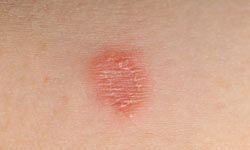For many, the sight of -- or mere idea of -- a fungus living in one's skin is repulsive.
But if you can distance yourself from the disgust, fungus is actually pretty fascinating. Once thought to be plants (mushrooms are still sorted among vegetables in the supermarket, after all), fungi's distinct cell walls and lack of chlorophyll distinguish them today as their own kingdom consisting of at least 80,000 species.
Advertisement
Most types of skin fungus are molds known as dermatophytes. Although there are many species of fungi that fall under the category of dermatophytes, a single species can affect different parts of the body and cause different skin reactions.
Here are five quick facts on the basics of skin fungus.
